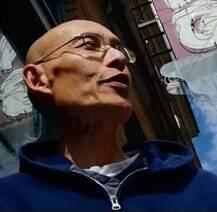The discovery of Ron Chew’s own extended family roots and delving into the history and faces of Seattle’s Asian community is the focus of “My Unforgettable Seattle,”
Chew will be speaking Aug. 4 at 6:30 p.m. at the Lopez Library. The event may also be attended remotely via Zoom.
“What I tried to do is put a face on a very specific community,” said Chew, Seattle-based author, activist and former Executive Director of the Wing Museum. The museum, located in Seattle, focuses on the culture, art and history of Asian Americans, Native Hawaiians and Pacific Islanders.
Through Chew’s own experiences, working as a busboy at the restaurant where his father waited tables, and watching his mother, a seamstress woven. with stories of others in the community, he puts a personal face behind those that prepare and serve Chinese food that so many love, and the shed light on the people who sew the cloths that keep so many warm.
“Seattle, particularly Pioneer Square, was a sewing hub of outerwear, and yet people don’t even know the people that make our gloves, our jackets. They are the neighbors that we should know better,” Chew said.
A majority of Chinese who lived in the area prior to the 60s and 70s have roots tied to the Chinese Exclusion Act.
According to the United States Office of the Historian, Chinese workers migrating to the U.S. in the 1850s were the first to work in the gold mines, agricultural jobs, factory work, and especially in the garment industry. “Chinese immigrants were particularly instrumental in building railroads in the American West, and as Chinese laborers grew successful in the United States, a number of them became entrepreneurs in their own right.,” the website states. In the San Juans, Chinese and Japanese immigrants worked in many industries including canneries, as cooks, gardeners, and quarrymen at McMilan’s LimeWork at Roche Harbor.
In 1882, The Chinese Exclusion Act was signed into law by President Rutherford B. Hayes. The act was originally legislated to end in 1892. Instead, it was re-established, not to be repealed until 1943.
“A lot of us didn’t know our own roots because many had come over with false identities and were afraid of deportation,” Chew added that unraveling the mystery of his own extended family’s journey was a complicated endeavor.
To gain more knowledge for his memoir he spoke with his parents and began to assemble the puzzle pieces.
During COVID Anti-Asian hate rose again. Chew saw a spike in Anti-Asian sentiment on graffiti on windows and telephone polls. He himself was confronted not far from his home
“I was most surprised by attacks on Asian senior citizens,” Chew said. “It has died down a bit, but it’s still lingering in the background.” Recent increases in tensions with China have some concerns there will be another uptick.
The exclusion act was not the only federal legislation devastating to Seattle’s Asian community.
In 1942, President Roosevelt signed an executive order authorizing the forced “relocation” of 120,000 Japanese Americans from their homes and into incarceration camps during WWII. According to Chew, approximately 10,000 Japanese were interned in the Seattle area. One family from San Juan Island was also forced into the camps. Jack Saota had worked as a cannery foreman and later establish a nursery and florist shop in Friday Harbor. However, the Saotas, like so many others, lost their home and livelihood when they were interred off-island.
“Neighbors, people that I grew up with had lost everything and had to rebuild once they were released,” Chew said. Some, like the Saotas, never returned to the homes left behind but started their lives all over again in other regions of the U.S.
“I think there was a very strong sense of betrayal,” Chew replied when asked if there was a common theme in the experiences of those he spoke with. “Many were American-born and were patriotic, fiercely loyal.”
On the 75th anniversary of the evacuation order, many events were held to remember the event. Stories were shared, some for the first time.
“I think there was a certain sense of release,” Chew said, adding “You can’t heal without articulating what you have been through, Individual stories have more power than statistics, and provide a telescopic view of what happened.”
Education is a good starting point in fighting bigotry, which is one of the reasons why Chew is concerned about the backlash of teaching the dark spots of American history. He cited Florida’s recent decision to alter the story and promote the “benefits” people of color gained from slavery.
“Changing history and attempting to deny the legitimacy of what people experienced worries me,” he said. “We need to work on what we teach in schools, work on our public dialogue.”
Chew has optimism for the future. The passion and drive he sees in today’s youth gives him hope.
“I have mentored quite a few younger folks. They have an energy that I no longer have,” he said. “It’s exciting to see.”
In the meantime, he is looking forward to visiting Lopez for the first time, exploring and meeting islanders.
Books will be available at the event, and an audio version is coming this fall, according to Chew. To learn more about him, go to https://www.ronchewcommunications.com/.
To RSVP for the event email nikyta@lopezlibrary.org., for the Zoom link, go to www.lopezlibrary.org.



